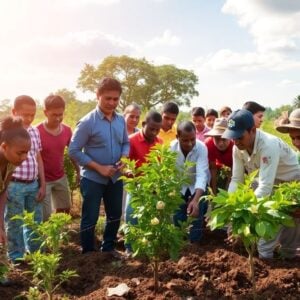A recent World Bank report and associated seminars reveal a stark reality: the global fight against poverty has stalled, potentially entering a "lost decade." The confluence of multiple crises, termed a "polycrisis," including the COVID-19 pandemic, rising debt, conflict, and climate change impacts, has disproportionately affected the world’s poorest, dimming prospects for achieving poverty reduction goals by 2030.
Key Takeaways
- The global goal of eradicating extreme poverty by 2030 is now out of reach, with projections indicating it could take decades longer.
- A "polycrisis"—the interconnected impact of COVID-19, debt, conflict, and climate change—is the primary driver of this slowdown.
- Poorer countries and populations, particularly in Sub-Saharan Africa and conflict-affected regions, are bearing the brunt of these crises.
A Decade of Stagnation
When the Sustainable Development Goals were set in 2015, there was optimism about eradicating extreme poverty by 2030. However, the last decade has seen a significant slowdown in progress. Between 2014 and 2024, the extreme poverty rate fell by only 2.5 percentage points, a stark contrast to the halving of poverty achieved in the preceding decade (2004-2014). This progress was largely driven by upper-middle-income countries like China and Indonesia. In contrast, countries eligible for International Development Association (IDA) assistance and lower-middle-income nations have experienced disappointing progress, with some low-income and fragile states even seeing reversals in poverty reduction.
The Impact of the Polycrisis
The "polycrisis" refers to multiple, interconnected crises whose combined effects amplify their impact. The World Bank identifies several key components:
- COVID-19 Pandemic: The pandemic caused a historic increase in poverty, adding 73 million people to the extreme poor in 2020. Poorer countries have experienced uneven and slower economic recovery, with some still recording higher poverty rates in 2024 than in 2019.
- Increasing Debt Burdens: Exacerbated by the pandemic and global economic slowdown, high debt levels in poorer countries have quadrupled interest payments on external debt for IDA-eligible countries since 2012. This diverts crucial funds from essential services like health and education.
- Rising Conflicts: Increased fragility and conflict in various regions have disrupted economic activity, hindered growth, and led to slow poverty reduction, particularly in Sub-Saharan Africa and the Middle East and North Africa. Poverty is forecast to become increasingly concentrated in fragile and conflict-affected countries within Sub-Saharan Africa.
- Extreme Weather Events: Record-breaking warm years and more frequent, severe extreme weather events linked to climate change pose significant risks to poverty reduction efforts, especially in regions like Sub-Saharan Africa, which lack adequate infrastructure and financial services to buffer against shocks.
Pathways Forward
The report emphasizes that for the poorest economies, the focus must be on economic growth and investment in human, financial, and physical capital. Lower-middle-income countries need to shift their focus towards growth and shared prosperity, implementing policies that boost incomes, enhance resilience to shocks, and reduce emissions. The World Bank is exploring various "Pathways Out of the Polycrisis" to address these interconnected challenges and reignite progress towards poverty eradication and sustainable development.
Sources
- The polycrisis behind a lost decade of poverty reduction, World Bank Blogs.
- World Bank Tokyo Online Morning Seminar #205 “Poverty, Prosperity, and Planet 2024: Pathways Out of
the Polycrisis”, World Bank. - Poverty, Prosperity, and Planet: Pathways Out of the Polycrisis, World Bank.







